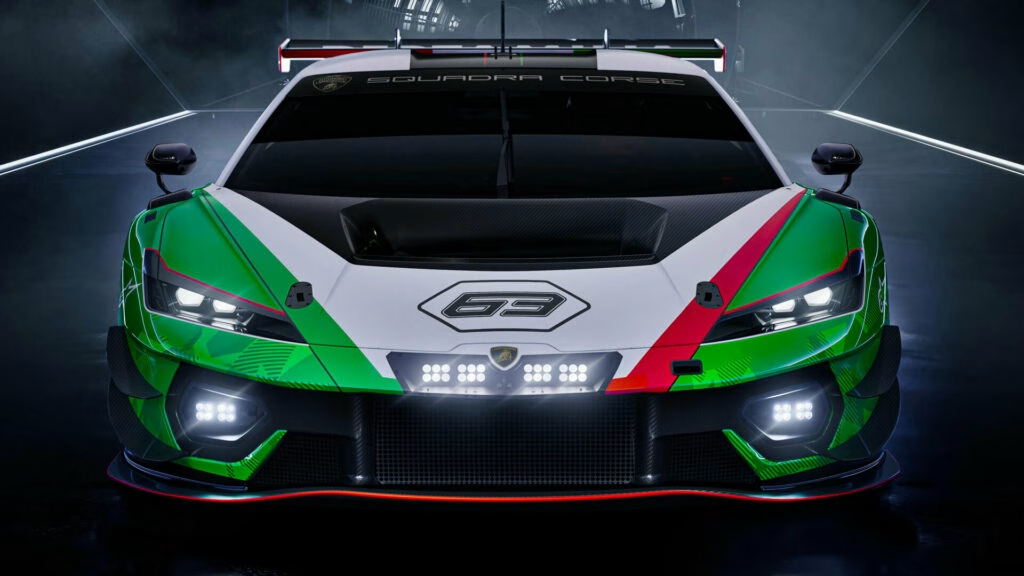What Sets the Lamborghini Temerario GT3 Apart from Its Predecessor?
Lamborghini’s new Temerario GT3 isn’t just another race car—it’s a bold statement. Taking the baton from the much-loved Huracán GT3, the Temerario GT3 is the first competition machine built entirely at Lamborghini’s Sant’Agata Bolognese headquarters. That’s a big deal. For the first time, the motorsport division had a hand in every stage, from the earliest sketches to the final bolt. The result? Pure magic. Every inch of the car is infused with lessons learned from a decade of Huracán GT3 dominance, which saw 96 championships and over 200 units sold, according to Lamborghini CEO Stephan Winkelmann.
How Does the Temerario GT3’s Design Boost Performance on the Track?
Let’s talk looks—and function. The Temerario GT3’s carbon composite bodywork, crafted in collaboration with Squadra Corse and Lamborghini Centro Stile, isn’t just for show. The aggressive front splitter, pronounced flics, and revised air intakes all serve a purpose: slicing through air and keeping the car glued to the tarmac. There’s a ventilated hood, a central light bar, and lightweight windows. Even the side skirts and 18-inch Ronal AG wheels are designed for maximum efficiency.
Move around to the back, and things get even wilder. A massive diffuser, a larger spoiler, and a towering rear wing crank up the downforce. These aren’t just race-day flexes—they’re the difference between holding a corner at 150 mph and spinning out. Lamborghini’s design team clearly sweated the details, and it shows.
Why Did Lamborghini Drop the Hybrid Powertrain for Racing?
Here’s where things get interesting. While the road-going Temerario is a plug-in hybrid with a jaw-dropping 907 hp, the GT3 version ditches the electric motors entirely. Why? Racing regulations and the need for simplicity and reliability. The GT3 uses a detuned twin-turbo 4.0-liter V8, pumping out 542 hp—down from the street car’s 789 hp (or 907 hp combined with electric assist). Smaller turbos, a redesigned airbox, a new Capristo exhaust, and recalibrated engine controls keep the power band broad and usable for long stints at the limit.
This move isn’t just about following the rulebook. It’s about building a car that can take the abuse of endurance racing—think 12 hours at Sebring—without breaking a sweat. The hybrid system’s weight and complexity are out; pure, focused performance is in.
What’s Under the Skin: Chassis, Suspension, and Serviceability
Race teams love cars that are easy to fix mid-race. Lamborghini gets it. The Temerario GT3 rides on a modified aluminum spaceframe chassis, extensively lightened and simplified. Gone are the hybrid brackets and unnecessary hardware. The design allows for quick swaps of major components like subframes—crucial when every second in the pits counts.
Suspension-wise, the GT3 gets new six-way adjustable dampers from KW, a wider track, and a longer wheelbase than the outgoing Huracán GT3 Evo2. That means more grip, more stability, and more confidence for drivers pushing the limits lap after lap.
How Has the Interior Been Tailored for Racing?
No plush leather or fancy infotainment here. Lamborghini hasn’t released full interior shots yet, but they’ve confirmed a roll cage, a new steering wheel shaped by driver feedback, and updated switchgear and graphics. There’s also a more comprehensive data logger and dedicated software—tools that help teams squeeze every last tenth out of the car. It’s a cockpit built for focus and feedback, not comfort.
What’s New in Pit Stop Technology and Refueling?
Endurance racing is won and lost in the pits. The Temerario GT3’s refueling system has been overhauled to allow faster fuel flow, shaving precious seconds off pit stops. There’s also a new fuel sensor for more accurate readings—no more guesswork when it comes to strategy. These tweaks might sound minor, but over a 12-hour race, they can mean the difference between a podium and a DNF.
How Does the Temerario GT3 Fit into Lamborghini’s Racing Legacy?
The Huracán GT3 set a high bar: 96 titles, 192 victories, and a reputation for reliability and speed. The Temerario GT3 is stepping into big shoes, but Lamborghini’s approach—integrating motorsport thinking from day one—suggests they’re aiming even higher. With its debut set for the 12 Hours of Sebring in March 2026, all eyes will be on how this new contender handles the heat of real competition.
The big takeaway? The Lamborghini Temerario GT3 isn’t about perfection—it’s about smarter adjustments. Start with one change this week, and you’ll likely spot the difference by month’s end. For racing teams and fans alike, that’s the real thrill: evolution, not just revolution.

